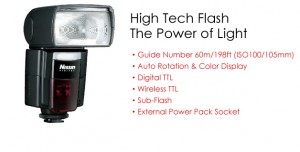For My core i7 machine with ASUS P6T deluxe MB(X58+ICH10R) running Win7 64 bits
c:\ drive (single 500GGB SATA DISK)
Sequential Read : 114.117 MB/s
Sequential Write : 115.773 MB/s
Random Read 512KB : 35.597 MB/s
Random Write 512KB : 73.242 MB/s
Random Read 4KB : 0.646 MB/s
Random Write 4KB : 2.087 MB/s
Test Size : 100 MB
Date : 2010/02/22 9:22:31
d:\ drive (2x1TB SATA RAID 1 using ICH10R), actually I am still researching why the squential R/W is so slow. I have refreshed the most updated BIOS and drivers from ASUS, but the results make no differences. I am still asking myself, is chipset RAID 1 really so slow or just because of my special case??
Sequential Read : 44.881 MB/s
Sequential Write : 57.924 MB/s
Random Read 512KB : 33.111 MB/s
Random Write 512KB : 24.641 MB/s
Random Read 4KB : 0.602 MB/s
Random Write 4KB : 1.274 MB/s
Test Size : 100 MB
Date : 2010/02/22 9:28:54
EMC iSCSI AX150
Sequential Read : 4.594 MB/s
Sequential Write : 32.111 MB/s
Random Read 512KB : 3.492 MB/s
Random Write 512KB : 27.249 MB/s
Random Read 4KB : 4.875 MB/s
Random Write 4KB : 2.325 MB/s
Test Size : 100 MB
Date : 2010/02/22 9:38:30
Thecus NAS5200 iSCSI
Sequential Read : 74.483 MB/s
Sequential Write : 39.634 MB/s
Random Read 512KB : 68.044 MB/s
Random Write 512KB : 53.470 MB/s
Random Read 4KB : 4.305 MB/s
Random Write 4KB : 3.223 MB/s
Dell Optiplex 620 p4 dual core 2.8Ghz running XP
c:\ single 500GB SATA disk
Sequential Read : 52.767 MB/s
Sequential Write : 39.743 MB/s
Random Read 512KB : 21.283 MB/s
Random Write 512KB : 20.604 MB/s
Random Read 4KB : 0.274 MB/s
Random Write 4KB : 0.798 MB/s
e:\ (320 GB PATA disk)
Sequential Read : 55.087 MB/s
Sequential Write : 53.615 MB/s
Random Read 512KB : 27.289 MB/s
Random Write 512KB : 38.354 MB/s
Random Read 4KB : 0.419 MB/s
Random Write 4KB : 1.673 MB/s




































